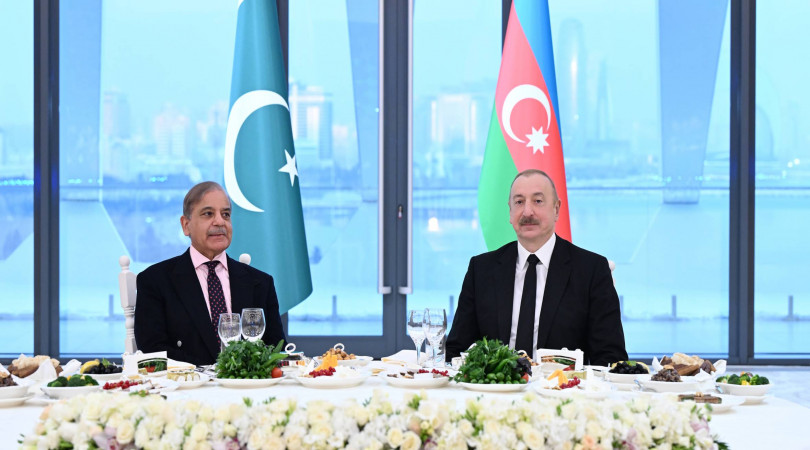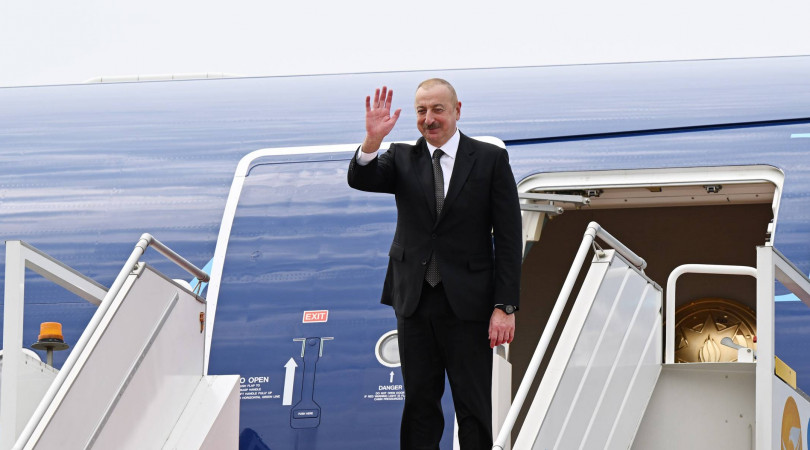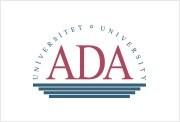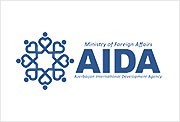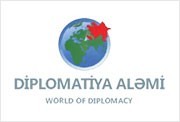Nagorno-Karabakh conflict: Origins, Present Status andLegal Aspects
Historical background.
The Nagorno-Karabakh region of the Republic of Azerbaijan is part of the geographical area called Garabaghthatfrom ancient time was part of different Azerbaijani states.The Gulustanand Turkmanchay peace treaties of 1828 and1813respectively signed between Russia and Iran made Northern Azerbaijan a part of Russia. After these treaties a rapid mass resettlement of Armenians in the Azerbaijani lands took place and the subsequent artificial territorial division emerged. The WW-I also contributed to increase in number of Armenians in the South Caucasus. From 1828 to 1911 alone, more than one million Armenians were resettled from Iran and Turkey in the region, and 350,000 Armenians appeared there in 1914-1916.
Between 1905 and 1907 the Armenians carried out a series of large-scale bloody actions against Azerbaijanis. The atrocities began in Baku and then extended over the whole of Azerbaijan, including Azerbaijani villages in the territory of present-day Armenia. Hundreds of settlements were raised to ground, thousands of civilians were barbarically killed.
Taking advantage of the situation following the WW-Ias well as the February and October 1917 revolutions in Russia, the Armenians began to pursue the implementation of their plans under the banner of Bolshevism. Thus, under the watchword of combating counter-revolutionary elements, in March 1918 the Baku Commune solely due to their ethnic affiliationannihilated thousands of Azerbaijanis in Baku Province,Shamakhi,Guba,Karabakh, Zangazur, Nakhchivan, Lankaran and other regions of Azerbaijan.
Expulsion of Azerbaijanis from their lands in the Soviet period.
It is notable fact that the present-day Armenia was established on the historical lands of Azerbaijan- Iravan Khanate that was overwhelmingly populated by ethnical Azerbaijanis. The facts illustrate that over the 70-years of Soviet rule Armenia succeeded in expanding its territory at the expense of Azerbaijan and used every possible means to expel the Azerbaijanis from their lands.
The territory of the first Armenian state in the South Caucasus established on 28 May 1918 in the Western part of present-day Armenia was 10,000 sq.km only (Batoum Treaty of 04 June, 1918). During the existence of this Armenian state from 1918-1920, it failed to expand its territories at the expense of neighbors.
During the Soviet period the immigration of a great number of Armenians from abroad and expulsion of Azerbaijanis from their lands took place. One of the important steps towards the artificial change of the demographic situation in Armenia was a Stalin’s 1945 decree on the immigration of foreign Armenians, according to which Armenia received around 100 thousands immigrants during 1946-1948.
On the pretext of resettling of Armenian migrants, the Council of Ministers of the USSR adopted on 23 December, 1947 and 10 March, 1948 special decisions on resettlement of Azerbaijani population from the Armenian SSR to the Kur-Araz lowlands of Azerbaijan SSR. Under these decisions, during the period of 1948 -1953 more than 150,000 Azerbaijanis were forcibly resettled from their historical homelands – the mountainous regions of Armenia – to the then waterless steppes of Mughan and the Mil plateau. At the same time, during the years of 1961 -1973 226,100 Armenians migrated to Armenia from abroad. And finally, shortly after the assertion of claims on Nagorno-Karabakh at the end of 1980s, the remaining more than 200,000 Azerbaijanis were forcibly deported from Armenia.
Armenian claims to Azerbaijani territories.
On 20 February 1988, the representatives of the Armenian community on the session of the Soviet of People’s Deputies of the Nagorno-Karabakh adopted a resolution seeking the transfer of their district to Armenia. On 26-28 February 1988, twenty-six Armenians and Azerbaijanis were killed as a result of the riots in Sumgait city of Azerbaijan. It is notable that one of the key figures of the violence against Armenians in these events was anethnical Armenian Edward Grigorian.The Sumgait events could hardly be managed without outside powerful support. As “The Times“ wrote, the KGB leadership tried “to weaken the Kremlin’s authority and powerbase” and “organized acts of provocation, using genuine local dissatisfaction as a base, in cities across the Soviet Union, including Sumgait and Baku…”
The military phase of the conflict. Khojali Genocide.
At the end of 1991 the conflict turned into a military phase. The ongoing armed conflict in and around Nagorno-Karabakh resulted in occupation of almost one fıfth of Azerbaijan’s territory and made one million people of the country an IDPor arefugee. The Republic of Armenia bears full responsibility for unleashing the war against Azerbaijan, occupation of its territories, ethnic cleansing and commitment of war crimes as well as establishment of puppet separatist regime in the occupied lands.
The act of genocide committed by Armenian aggressors in Khojali town of Nagorno-Karabakh is one of the most tragic page of Azerbaijan’s modern history.Thistown was under the siege since October, 1991. There were no regular armed forces there. Over the night from February 25 to 26, 1992 Armenian armed forces with support of former Soviet regiment stormed Khojali firing by artillery, missiles and tanks on unarmed people. Hundreds of children, women and elderly became the victims of brutality of Armenians. As a result 613 people were killed, 487 were wounded, including 76 children, 1275 people have become hostages, 150 people were missing.
Later, the Armenian side admitted that one of the prime goal of Armenian armed forces was the “liquidation of Khojaly” and as it was stated by one of the commanders of this genocide SerjSarkisyan, who is presently a President of Armenia, “…our aim was to break a stereotype that Armenians cannot annihilate civil population”. Another active participant of the genocide general SeyranOghanyanis now the Defense Minister of Armenian Republic.
Given the gravity of the crime committed against civilian population in Khojaly, the question, however, is whether there is a clear evidence of the commission of genocide, as that term has been defined in international law. In 1948, the UN General Assembly adopted Convention on the Prevention and Punishment of the Crime of Genocide, to which both Armenia and Azerbaijan are parties. This international instrument represents a competent codification of basic legal principles relating to genocide. In accordance with this treaty, genocide means acts committed with intent to destroy, in whole or in part, a national, ethnical, racial or religious groups, as such.
Indeed, it is very obvious that the act of genocide has taken place in Khojaliand number of countries and international organizations have officially recognized the Khojali massacre as an act of genocide.
İt is pertinent to remark that the nation that claims to be a part of great culture and civilization and pretending to be a victim of so-called genocide by Ottomans in the beginning of the 20-th century at the end of the very century themselves committed a brutal and barbaric act of genocide on 26 February, 1992against innocent civilians. At the same time Armenians also own ASALA terroristic organization and number of others spread all over the world which gained notoriety with assassination of 46 Turkish diplomats as well as commitment of several terroristic acts against civilians in the USA, Europe and the Middle East. The year, Armenians will be marking the 100th anniversary of so-called genocide divert attention of the World community from the crimes committedby themselves in 1905, 1907, 1918, 1973-1994 and 1992.
The aggression against the Republic of Azerbaijan has severely damaged the socio-economic sphere of the country. Six cities, 12 towns, 830 settlements and hundreds of education, health, cultural facilities and mosques were destroyed. Flocks of several hundreds of thousands of sheep and dozens of thousands of cattle have been driven out of the occupied territories to Armenia. About 70% of the summer pastures of Azerbaijan remains in the occupied zone.
A fragile ceasefıre in the conflict between Armenia and Azerbaijan was put in place in May 1994. However, the Armenian side regularly and deliberately violates the ceasefire by attacking and killing Azerbaijani military personnel as well as civilians residing in the territories adjacent to the front line. Over the past years,especially in the past 2014 and beginning of current year, such violations and armed provocations have become more frequent and violent.
Legal Aspects
It has been internationally recognized that the territories of Azerbaijan are under occupation. In 1993, the UN Security Council adopted resolutions 822 (1993), 853 (1993), 874 (1993) and 884 (1993), condemning the use of force against Azerbaijan and occupation of its territories and reaffırming the sovereignty and territorial integrity of Azerbaijan and the inviolability of its internationally recognized borders. In those resolutions, the SC reaffirmed that the Nagorno-Karabakh region is part of Azerbaijan and called for immediate, full and unconditional withdrawal of the occupying forces from all occupied territories of Azerbaijan. The OSCE, European Parliament, OIC, Parliamentary Assembly of the Council of Europe and other international organizations adopted resolutions and decisions supporting territorial integrity of Azerbaijan.
The illegality of the separatist entity and its structures, established by Armenia on the occupied territory of Azerbaijan, has been repeatedly stated at the international level. This so-called “Nagorno-Karabakh Republic” that is essentially controlled by Armenia is denied any international recognition.
The Minsk Group, the activities of which have become known as the Minsk Process, spearheads the OSCE’s efforts to find a peaceful solution to the Nagorno-Karabakh conflict. It is co-chaired by France, the Russian Federation, and the United States. So far, all efforts of this Group as well as other attempts to find a peaceful solution of the conflict remained unproductive.
Position of Pakistan.
Pakistan, being one of the first countries in the World to recognize the independence of Azerbaijan, did not establish diplomatic relations with Armenia due to occupation of Azerbaijani lands. Pakistan always stood with Azerbaijan and supported its principled stand on the very issue in international fora. In its 01.02.2012 and 05.10.2014 resolutions the Senate of Pakistan reaffirmed the territorial integrity and sovereignty of Azerbaijan and called upon implementation of resolutions of UN SC. At the same time in its first document the Pakistani legislative body recognized the Khojali genocide and demanded to bring the perpetrators of this crime to justice.
People of Azerbaijan acknowledge and highly value the stand of brotherly Pakistan on the core issue of the country.This is a vivid demonstration of commitment of Pakistan to the principle of justice, international right and loyalty to the ties of brotherhood.
Conclusion
The Armenian-Azerbaijani Nagorno-Karabakh conflict poses the biggest threat to the region. The soonest settlement of the conflict based on the norms and principles of international law will pave the way for regional peace and even greater development, and usher new opportunities for regional cooperation.
We strongly believe that the Nagorno-Karabakh problem will be solved in favor of the citizens of the multinational Azerbaijan. Our country was and will be the common house of all its residing peoples.

